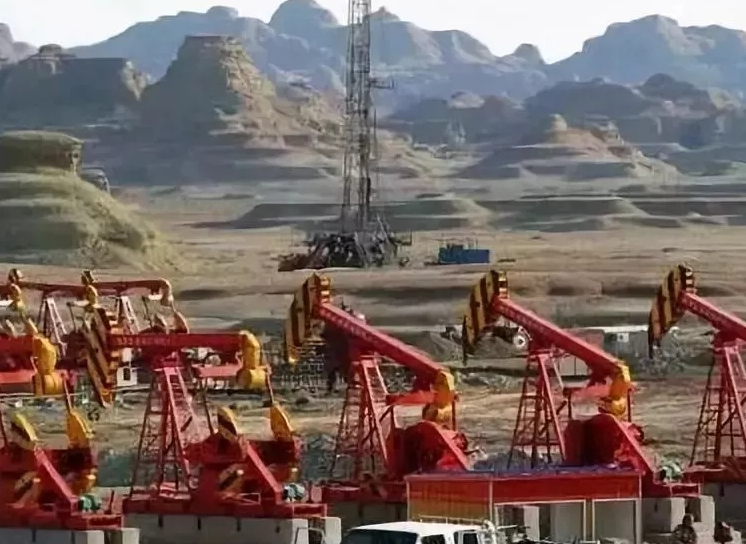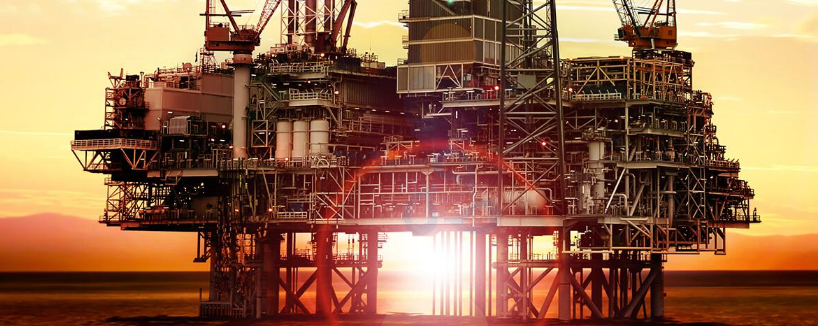Oil and gas industry carbon reduction path
In the opening article of our series "China Accelerating towards Carbon Neutrality", we imagined a carbon-neutral world in 2050 dominated by new energy elements such as electric vehicles, hydrogen steelmaking, photovoltaic power generation, and green energy storage. Achieving this vision also means that the world needs to reduce net man-made carbon dioxide emissions by about 45% by 2030 compared with 2010. To achieve "net zero emissions" by 2050. In the face of the dual challenges of target and time, the road to carbon neutral transition needs to be started. While countries are competing to carry out specific research and implementation work, China also took the lead in proposing the goal of "carbon peak and carbon neutrality" in the general debate of the seventy-fifth session of the United Nations General Assembly. The United Nations Sustainable Development Goal 13 "Climate action" is also one of McKinsey's social responsibility priorities in China. At this key juncture, McKinsey officially launched China's large-scale carbon neutral transition research project in China. With the help of McKinsey's rich experience in global sustainable development research, combined with comprehensive understanding and profound insight into Chinese society, industries and enterprises, Mobilize the knowledge of more than 100 people around the world to carry out research on carbon neutral transition trends, countermeasures and technologies across major industrial sectors, hoping to make a small contribution to China's early achievement of carbon neutrality goals.
As the fifth article in this series, this paper will continue to study the carbon neutral transition using the oil and gas industry as a sample. Subsequently, we will publish a series of articles covering many topics such as power industry carbon emission reduction path analysis, emerging technology discussion, investment cost forecast, international practice sharing, and explore the latest trends of traditional carbon emission reduction process innovation, carbon capture utilization and storage (CCUS), hydrogen energy and other new carbon emission reduction technologies. In the process of continuing to promote this research, we are very welcome experts from all walks of life colleagues, you can put forward valuable comments in the message area, you can also directly contact the team. We look forward to working with all sectors of society to advance the path of carbon neutral transition in a green China.
The need for carbon reduction in China's oil and gas industry
As a traditional fossil energy source, oil and natural gas have always been "big" carbon emissions. International Energy Agency (IEA) statistics show that in 2019, global carbon dioxide emissions were 33 billion tons, mainly from the use of primary energy sources such as coal, oil and natural gas, of which oil and natural gas carbon emissions reached 18.2 billion tons, accounting for 55%. The entire value chain of the oil and gas industry, from extraction, transportation, storage to end-use applications, generates a large amount of carbon emissions, accounting for more than 40% of the global total greenhouse gas emissions - of which production stage emissions account for 20%, and use stage emissions account for 80%. To achieve the goal of carbon neutrality, the oil and gas industry must be the main emission reduction.

In the long term, global electrification and renewable energy will further reduce oil and gas demand (see Figure 2). According to McKinsey Global analysis, the share of oil and gas in total energy demand would need to fall from 55 per cent today to 15 per cent by 2050 under the 1.5C target scenario, which would have a significant impact on the oil and gas sector. The picture is similar in China, where both the National Energy Institute and McKinsey analysis say oil demand is expected to fall by 70-85% by 2050. As a result, the energy transition has become an irreversible trend and a race to win, and the oil and gas industry needs to have the courage to break the rock and seek a late force to leverage the transition in the context of carbon neutrality.
In addition, capital markets will put pressure on oil and gas companies to reduce emissions. Investors are increasingly sensitive to environmental issues, and there have been cases in foreign countries where shareholders have asked oil giants to strengthen the disclosure of environmental and climate-related data and risks in ways such as rights protection and divestment, and to develop targeted energy transformation and emission reduction plans. In 2018, the Global Sustainable Investment Alliance (GSIA) survey showed that sustainable investment assets in the world's five largest markets reached $30.7 trillion, accounting for one-third of total assets under management. As of 2019, more than 1,000 investment funds with a total asset management scale of $12 trillion have announced varying degrees of divestment from the traditional fossil energy industry. In China, 32 banks, funds and insurance companies have joined the United Nations Principles for Responsible Investment (PRI), which requires that environmental, social and governance (ESG) factors be taken into account in investment processes and that climate change-related risks be disclosed in a timely manner.
China's oil and gas industry carbon reduction path
According to the McKinsey analysis, under the 1.5 ° C temperature control scenario, greenhouse gas emissions would need to be reduced by 95% over the life cycle of oil and gas by 2050. In our path, the decline in end demand for oil and gas is the biggest driver, contributing 80% of greenhouse gas reductions. Carbon reduction measures in China's oil and gas industry chain, including oil extraction, transportation and chemicals, will contribute about 15% of the reduction.
Greenhouse gas emissions in the oil and gas industry mainly include carbon dioxide and methane. Carbon dioxide emissions are mainly generated by heating and energy supply demand, such as the use of natural gas as fuel for heating and steam generation, and the tailpipe emissions caused by self-owned power plants. On a 20-year scale, the warming potential of methane is about 86 times that of carbon dioxide, and it is a kind of greenhouse gas that needs to be controlled first. Of the 15% greenhouse gas emission reduction contributed by the oil and gas industry chain, more than 60% came from methane emission reduction, and the remaining 40% came from carbon dioxide emission reduction. Among them, the emission reduction of upstream oil production accounts for about 10%, and the emission reduction of downstream oil refining accounts for about 30%.
Tackling methane emissions is a no-regret way to reduce emissions by applying new technologies to everyday processes. Existing technologies can address 70% of methane escapes, but methane-reduction technologies have not yet been implemented on a large scale due to regulatory challenges, high return on investment requirements, and interruptions to conventional oil recovery operations. Available technologies include:
Replacing high-emission components: Controlling high-emission methane emissions by replacing high-emission pumps, compressor seals, compressor seals, instrument air systems and electric motors can contribute up to 30% of the total methane emission reduction. However, the instability of the quality of the replacement equipment may lead to a certain degree of deviation in the emission reduction.
Installation of emission control devices: Control of methane emissions through installation of steam recovery devices, blowdown capture units, plungers, flare combustion, etc., thereby reducing methane emissions, accounting for 7% of the total methane emission reduction. However, the unreliable quality of emissions control equipment, especially gasoline and oil recovery systems, and inexperience in installing and using new emissions control equipment can affect total emissions reductions. In addition, the combustion of the torch converts methane into carbon dioxide, and to some extent produces greenhouse gases.
Leak Detection and Repair (LDAR) : 26 percent of total methane emissions reduction through the use of technologies such as infrared photography to locate and repair leaks across the value chain. However, due to the uneven quality of service and expertise of LDAR providers, leaks need to be tracked regularly, so the labor intensity is relatively high.
Other emerging technologies, such as digital sensors, predictive analytics, microtechnologies using satellites and drones to detect leaks, compressing and liquefying methane gas byproducts, and catalysts to reduce methane, accounted for 4 percent of total methane emission reductions. However, these new technologies require high installation costs and human capital, and companies lack the incentive to invest and innovate in this area.

Upstream in the oil and gas chain, offshore fields contribute about 80% of CO2 emissions. Emissions reductions in the upstream sector rely mainly on process optimization, i.e. improving energy efficiency in processes and reducing the share of fossil fuels. More than 90% of onshore oil fields are already powered by the grid for oil production, which itself emits only a small amount of carbon dioxide in the heating portion. However, offshore oil fields still burn oil and gas and produce carbon dioxide. Improving energy efficiency is a no-regret way to reduce emissions from offshore oil fields, and it is also the way to achieve the highest technology maturity and resource availability. By improving the design of equipment and processes and purchasing energy-saving equipment to improve energy efficiency, offshore oil fields have the potential to reduce carbon emissions by 15%. The remaining emissions can be solved through submarine cable power supply. Compared with offshore carbon capture and storage, submarine cable power supply is a mature and more economical means of carbon emission reduction. But undersea cables are expensive, costing more than $100 per tonne of carbon dioxide to reduce in the case of offshore fields. In a low oil price environment, oil and gas companies need external incentives to act. In addition to submarine cables, offshore wind power is also a potential form of electrification, especially for offshore oil fields.
In refining and chemicals downstream of the oil and gas chain, carbon reduction will be achieved by strategically deploying emerging technologies such as plastic recycling, carbon capture, utilization and storage (CCUS), and equipment electrification. However, these high-potential carbon emission reduction technologies are not yet fully mature, so they need to be selected and adopted in a targeted way based on regional resource endowments. We suggest that Chinese refining and chemical enterprises may consider the following three regional types to make targeted layouts to fill the carbon reduction gap:
CCUS scale potential areas: the representative regions are Northeast, North, Northwest and East China, such as Heiji-Ji-Liao, Beijing-Tianjin-Hebei, Yangtze River Delta, Xinjiang and Shaanxi. These areas are close to oil fields and other high-carbon emission industries, the cost of carbon dioxide transport and storage is low, and it is easy to collaborate with surrounding industries to form economies of scale and reduce capital expenditure, so CCUS is recommended as a priority. For example, Shaanxi's oil refining industry has a synergistic effect on carbon emission reduction with the coal chemical industry, so it can give priority to pilot CCUS scale. We estimate that CCUS scale will result in approximately 20 million tonnes of CO2 reductions per year for the Chinese oil and gas industry.
Electrification pilot representative areas: The representative areas are Central and southwest China, such as Hubei, Sichuan, etc. These areas have abundant clean energy and low electricity prices, which can reduce the cost of electricity for electrification pilots. For example, Sichuan has the largest installed hydropower capacity in China, with a combined installed capacity of 2.5 GW of solar and wind power; Hubei, which has the third-highest installed hydropower capacity in China and a total installed renewable energy capacity of more than 10 million kilowatts, can prioritize pilot electrification. We expect the electrification pilot to reduce emissions by about 2 million tonnes of CO2 per year in China's oil and gas industry.
Strategic areas according to local conditions: for example, Shandong Province, which not only has abundant and cheap electricity from solar and wind energy, can carry out electrification pilot, but also is close to oil fields (such as Shengli Oilfield), which is easy to carry out CCUS scale, so the choice of carbon emission reduction means needs to be discussed one by one and specific analysis.
Inspiration for oil and gas enterprises
Setting goals, the future is here: Deeply understand the impact of national carbon emission reduction goals and macroeconomic situation on China's oil and gas industry chain during the 14th Five-Year Plan period, and explore highly attractive carbon emission reduction opportunities in combination with the current situation of enterprise business and carbon emissions, so as to formulate specific carbon emission reduction and transformation goals in the next 3-5 years, 5-10 years and even to 2050.
Set a strategy, risk and organic: Analyze the risks of traditional oil and gas assets in a low-carbon environment, consolidate and optimize the quality of oil and gas assets, and minimize the impact of carbon reduction on profitability. For oil and gas companies with upstream or downstream assets overseas, it is more important to clarify the local carbon emission level of the enterprise and the possible corresponding carbon tax as soon as possible. For new growth opportunities, it is necessary to determine the key development direction by analyzing the potential income, and formulate entry plans or accelerated expansion plans. For new technologies and new solutions with clear prospects, accelerate the layout, link strategy, operation, market and organization, and win the first opportunity; For disruptive technologies with uncertain prospects (such as controlled nuclear fusion), systematic research is carried out in close solidarity with the ecosystem, and the impact of the next generation of technology on the industry as a whole and the enterprise itself is prepared for the energy future. In the direction of investment strategy, it is necessary to carry out top-down management to ensure that the investment portfolio is closely integrated with the strategic plan, and to clarify the investment performance objectives and management mechanisms to promote the optimization and improvement of asset allocation.

Operation strategy, benefit first: In order to achieve the carbon emission reduction target, formulate specific emission reduction measures at the asset level, calculate its emission reduction potential and return on investment, that is, estimate the economic benefit, investment cost, operating cost and corresponding risk, form a marginal emission reduction cost curve, and find out the most feasible and economical carbon emission reduction path, and actively prepare for participating in the carbon trading market. In daily management, assess the potential impact of climate risks on the company and establish management mechanisms to address climate risks.
Enabling transformation and management support: In order to continuously promote emission reduction optimization in a long-term manner, oil and gas companies have decentralized targets for domestic demand, enhanced transformation capabilities, embraced innovative thinking, and released transformation signals externally. First of all, enterprises should formulate clear carbon reduction targets and milestones at the departmental level to ensure consistent thinking and ensure the implementation of the strategy. Second, improve the transformation capacity of enterprises in all sectors, including the development of high-quality talent management mechanisms, so as to obtain a market-oriented, innovative and international talent pool. Third, make use of organizational structure adjustment and corporate culture upgrade to balance the conflict between new and old businesses and stimulate the enthusiasm of employees for change. Fourth, formulate corporate publicity strategies, reflect the product differentiation of carbon emission reduction, persuade investors, customers and the government to support the emission reduction plan from a reasonable perspective, show the determination of Chinese oil and gas companies to reduce carbon emissions to the international community, and let the public understand the social responsibility practices of enterprises.
Companies, industries and localities should set carbon-neutral transition targets based on a holistic consideration of the entire oil and gas value chain. Because of the differences in assets, markets or operational conditions of each link, it is necessary to take different policy paths in different links. If the research and development and reserve of low-carbon technologies, such as a new generation of clean and efficient recyclable production processes, energy saving and carbon dioxide recycling technologies, clean development, transformation and utilization of fossil energy technologies can be supported, enterprises will have the incentive to increase investment in scientific and technological innovation. In appropriate areas, we should vigorously promote the demonstration of pilot projects for carbon dioxide capture, oil displacement and storage, promote green products, green factories and green parks, encourage enterprises to develop high-quality, durable and recyclable green petrochemical products, carry out ecological product design, formulate low carbon standards, increase the proportion of low carbon raw materials, and reduce the carbon footprint of products throughout the life cycle. Drive upstream and downstream value chains to reduce carbon emissions. Supervision and comparative analysis in the industry should be strengthened, and targeted subsidy support should be given to benchmarking enterprises and advanced transformation actions in the industry. At the same time, we should highlight local responsibilities, strengthen performance assessment, improve policies and measures, and explore pilot experience. If the local oil and gas industry and other industries with high carbon emission and difficult emission reduction are relatively developed, CCUS oil displacement large-scale parks can be developed on a pilot basis to expand the scale effect, create a new engine for industrial development while reducing the marginal cost of local enterprises using carbon emission reduction technology, and form a leading demonstration effect in the country.
- EMERSON
- Honeywell
- CTI
- Rolls-Royce
- General Electric
- Woodward
- Yaskawa
- xYCOM
- Motorola
- Siemens
- Rockwell
- ABB
- B&R
- HIMA
- Construction site
- electricity
- Automobile market
- PLC
- DCS
- Motor drivers
- VSD
- Implications
- cement
- CO2
- CEM
- methane
- Artificial intelligence
- Titanic
- Solar energy
- Hydrogen fuel cell
- Hydrogen and fuel cells
- Hydrogen and oxygen fuel cells
- tyre
- Chemical fiber
- dynamo
- corpuscle
- Pulp and paper
- printing
- fossil
- FANUC
- Food and beverage
- Life science
- Sewage treatment
- Personal care
- electricity
- boats
- infrastructure
- Automobile industry
- metallurgy
- Nuclear power generation
- Geothermal power generation
- Water and wastewater
- Infrastructure construction
- Mine hazard
- steel
- papermaking
- Natural gas industry
- Infrastructure construction
- Power and energy
- Rubber and plastic
- Renewable energy
- pharmacy
- mining
- Plastic industry
- Schneider
- Kongsberg
- NI
- Wind energy
- International petroleum
- International new energy network
- gas
- WATLOW
- ProSoft
- SEW
- wind
- ADVANCED
- Reliance
- YOKOGAWA
- TRICONEX
- FOXBORO
- METSO
- MAN
- Advantest
- ADVANCED
- ALSTOM
- Control Wave
- AB
- AMAT
- STUDER
- KONGSBERG
- MOTOROLA
- DANAHER MOTION
- Bently
- Galil
- EATON
- MOLEX
- Triconex
- DEIF
- B&W
- ZYGO
- Aerotech
- DANFOSS
- KOLLMORGEN
- Beijer
- Endress+Hauser
- MOOG
- KB
- Moxa
- Rexroth


Email:wang@kongjiangauto.com

















































































































